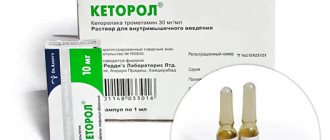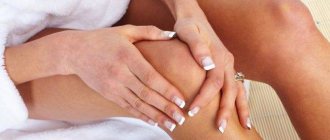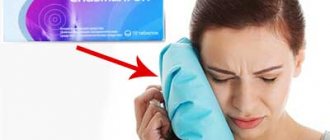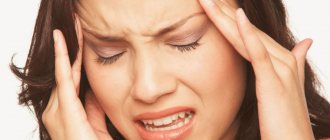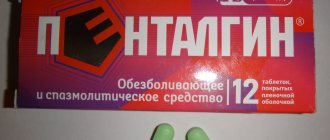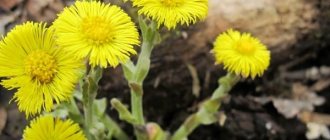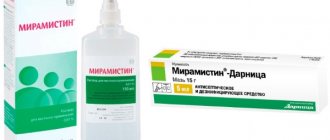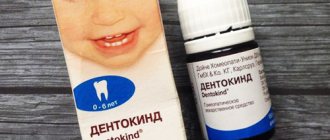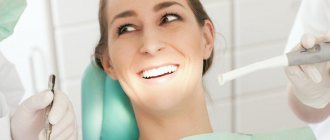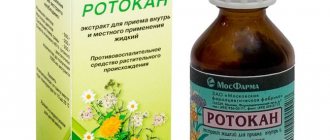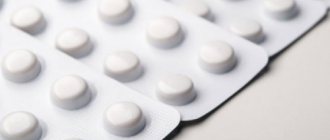Description of the drug
Nise (active ingredient nimesulide) is a drug with anti-inflammatory, antipyretic and analgesic effects.
Effectively relieves the symptoms of the disease, but does not affect the root cause of the disease. It is recommended for use in conjunction with complex treatment, which is selected depending on the specifics of the disease.
Analogues substitutes
The pharmaceutical market offers a fairly wide range of drugs similar to Nise:
Ibuprofen (tablets). The main active ingredient of the drug is ibuprofen. Gives an analgesic, antipyretic, anti-inflammatory effect.
Diclofenac (injection solution, capsules, tablets, gel, rectal suppositories). The main active ingredient of the drug is diclofenac sodium. Gives an analgesic, anti-inflammatory, anti-edematous effect.
Nimesulide (tablets). Drug group: sulfanilides, with the main active ingredient nimesulide. Indicated for acute pain of various etiologies.
Photos of drugs:
Diclofenac Ibuprofen Nimesulide
Nimesil (granules). Belongs to the group of non-steroidal anti-inflammatory drugs. Indicated for the treatment of acute pain, symptomatic treatment of osteoarthritis.
Movalis (tablets, rectal suppositories, injection solution, suspension). Ethanolic acid derivative, non-steroidal drug. Has a pronounced anti-inflammatory effect. Analgesic and antipyretic.
Ketorol (tablets, injection solution). A non-steroidal drug with a predominantly analgesic effect.
Photos of analogues:
Ketorol Movalis Nimesil
Ketanov (tablets, injection solution). Non-narcotic analgesic. The main active ingredient is ketorolac.
Aertal (tablets). The main active ingredient is aceclofenac. Non-steroidal anti-inflammatory, analgesic drug.
Nurofen (tablets). Belongs to the group of non-steroidal anti-inflammatory substances with the main active ingredient ibuprofen.
Photos on the topic:
We suggest you familiarize yourself with 21 ways to get rid of the smell of garlic from your mouth.
Ketanov Airtal Nurofen
Meloxicam (injection solution). A drug from the oxicam group, the active ingredient is meloxicam.
Ketonal (tablets, capsules, injection solution, rectal suppositories). Non-steroidal anti-inflammatory drug with the main active ingredient ketoprofen. Analgesic and antiperetic.
Fastum gel (gel-based external agent). The main active ingredient of the drug is ketoprofen. Eliminates the inflammatory process in joints, muscle tissue, tendons.
Xecofam (tablets, injection solution). The main active ingredient is lornoxicam. A drug with a pronounced anti-inflammatory effect, moderate analgesic and decongestant.
Ibuklin (tablets). Combined drug. Active ingredients of the drug: paracetamol, brufen. Analgesic, antipyretic, anti-inflammatory drug.
Photo gallery:
Fastum gel Ibuklin Ketonal Xecofam Meloxicam
According to the mechanism of action, the gels and ointments Sulaydin, Bioran, Ortoflex, Voltaren are also similar to Nise gel.
Indications for use
Nise tablets are prescribed for:
- Any types of arthritis;
- Exacerbation of gout;
- Problems with joints;
- Spondylitis;
- All types of osteochondrosis and radicular syndrome;
- Inflammation of ligaments and tendons;
- Consequences of operations and injuries;
- Neck pain and sprains;
- Various pains (headache, toothache, arthralgia);
- Low blood pressure.
Suspensions are used:
- For the treatment of osteoarthritis;
- For severe pain in the back and lower back;
- After injuries and dangerous stretch marks;
- For toothache;
- With algodismenorrhea.
The gel is effective:
- For chronic diseases of the musculoskeletal system;
- With articular syndrome;
- For the treatment of osteochondrosis and arthrosis;
- When tendons rupture;
- To relieve severe muscle pain;
- To relieve inflammation in tissues;
- For severe bruises.
How does nise work?
Like other drugs in the group, this drug has a number of positive effects on the body:
- Pain reliever;
- Antipyretic;
- Anti-inflammatory.
Such wide possibilities are due to the ability to suppress a special enzyme - cyclooxygenase. When it is released, leukotrienes and prostaglandins, which are also called inflammatory mediators, begin to be produced. With their increased production, the inflammatory process in the tissues is maintained, therefore, many toxic substances and cell breakdown products are released into the blood. This leads to swelling, pain, and increased temperature.
After taking Nise, the activity of inflammation quickly decreases, the symptoms subside. The description of the medicine states that its effect is not specific - this means it is effective for any type and location of the inflammatory reaction. In terms of effectiveness, the drug is superior to drugs based on ibuprofen, diclofenac, acetylsalicylic acid, especially in terms of antipyretic action.
We suggest you read Why the gums hurt near the tooth: the causes of aching pain
Nise ointment (gel) is a local form of the drug and is practically not absorbed into the general bloodstream. Therefore, it has less broad contraindications. Tablets and granules are quickly absorbed, and the maximum concentration in the blood is reached after 1.5 hours. Due to its ability to penetrate into the female reproductive system, into the synovial fluid of blood vessels, the medicine is used in gynecology, traumatology, orthopedics, and surgery.
Contraindications for use
In the form of granules and tablets, Nise is not recommended for use:
- If you are allergic to the components of the medicine;
- Patients with asthma;
- For ulcerative formations on the gastric mucosa;
- At the time of bleeding;
- For inflammation in the intestines;
- If the patient has a blood clotting disorder;
- With insufficiency in the kidneys and liver;
- Patients suffering from alcoholism and drug addiction;
- With hyperkalemia;
- Pregnant and breastfeeding women.
Nise in gel form may have a negative effect if:
- Sinus polyposis;
- Ulcer in the stomach;
- Dermatosis;
- Various lesions on the skin;
- Kidney failure in a severe stage.
special instructions
Nise is used as part of complex therapy. Moderate doses of nimesulide are prescribed together with other medications with caution and under the supervision of a physician.
Drug interactions
Nise enhances the effect of medications that help reduce blood clotting. When treated simultaneously with lithium preparations, the risk of liver and kidney intoxication increases. The medicinal effect of furosemide is weakened.
If treatment with glucocorticosteroids and serotonin reuptake blockers is started, the use of Nise should be discontinued. This will protect the patient’s body from gastric and intestinal bleeding.
When used with Warfarin and acetylsalicylic acid, there is a high risk of bleeding. The medicine should not be used simultaneously with Digoxin, Phenytoin, since under the influence of each other the therapeutic effect of the drugs is reduced.
When using this drug together with hypoglycemic drugs, patients should constantly monitor their blood sugar levels. When treated with antihypertensive drugs, the patient's blood pressure may decrease, so this interaction is undesirable. The simultaneous use of nimesulide and cyclosporine has a detrimental effect on the kidneys.
After two weeks of using the drug, you need to take a blood test and monitor liver function indicators. Nise retains fluid in organs and tissues, so people with hypertension and cardiac disorders should use the medicine with caution.
It is not recommended to take this drug with other non-steroidal drugs. If signs of liver damage appear (itching, yellowing of the skin, nausea, stomach pain), stop taking Nise.
The drug affects the reaction, so during treatment it is not recommended to drive a car or engage in activities that require high concentration. With long-term or constant use of Nise, monitoring the condition of the kidneys, liver, stomach and intestines is necessary. The compatibility of Nise and alcohol has a toxic effect on organs.
Analogs
Instead of the original medicine, analogues are often used. Some patients find Nise in the form of tablets or gel expensive, so they are looking for alternative treatment options. Sometimes it is necessary to replace the drug due to contraindications. The pharmaceutical industry produces various analogues of the drug:
- Actasulide.
- Aertal.
- Brustan.
- Aponil.
- Nimesulide.
- Nimesil.
- Nurofen.
- Nimulid.
- Voltaren.
- Fastum-gel.
- Rofecoxib.
- Ibuprofen.
- Ketanov, Ketorol.
Nimesil contains the active component nimesulide. Indications for use and list of contraindications are the same as for the drug Nise. The medicine is released in powder form and sold in packaged form.
Ketanov is available in tablets and contains the main component - ketorolac. Refers to non-steroidal anti-inflammatory drugs, which are derivatives of pyrrolysine-carboxylic acid. Relieves pain, inflammation and reduces temperature during fever. Like any drug from this group, Ketanov has a number of contraindications and adverse reactions.
Ketorol contains ketorolac and replaces Nise in all clinical characteristics. The drug is produced in tablets, gel and injection solution. Children under 16 years of age are prohibited from using this product. The gel is contraindicated in the last trimester of pregnancy, and other forms cannot be used throughout the entire period of bearing a child.
The combined drug Brustan is a substitute for Nise in many respects. The drug is available in the form of a suspension and tablets. The drug contains ibuprofen and paracetamol. Children from two years of age are allowed to use a suspension with an acceptable concentration of active ingredients. However, it is not recommended for pregnant women in the last trimester.
Nimulide has the same therapeutic effect as Nise because it contains nimesulide. The list of contraindications is similar. During inpatient treatment, the doctor prescribes injections with the same active substance. The solution is packaged in 2 ml vampules containing 75 mg of the substance.
Novigan tablets relieves pain of various types, inflammation and muscle spasms. It is forbidden to use by pregnant women and children under 16 years of age.
The drug Aceclofenac is an analogue of Nise with the same list of indications for use. Available in tablet form. Not approved for use by children under 18 years of age, with diseases of the stomach and intestines, after aortic bypass surgery and heart failure, during the period of bearing and feeding a child.
Ibuprofen-Hemofarm replaces Nise for therapeutic reasons. Produced in effervescent tablets, water-soluble and film-coated tablets. The effervescent medicine can be used by children from 6 years of age as an analgesic and anti-inflammatory agent. Regular tablets are used from 12 years of age. The exception is the category of expectant and nursing mothers.
Airtal tablets belong to the group of non-steroidal drugs and are used in complex therapy. Relieves pain and inflammation in damaged tissues of the musculoskeletal system. Indications are arthritis of various forms, bursitis, osteoarthritis, osteochondrosis, menstrual pain, toothache and headache. The active ingredient is aceclofenac. Available in tablets, suspension and gel. After 40-50 minutes it penetrates to the source of pain.
Voltaren Emulgel of domestic production contains diclofenac diethylamine (equal to 2 g of diclofenac). A nonsteroidal anti-inflammatory drug characterized by analgesic and anti-inflammatory effects. The gel is used to lubricate sore and swollen areas.
The drug Rofecoxib is a non-steroidal drug and a cyclooxygenase II inhibitor. Sold in the form of tablets, suppositories, gel and injections. The composition includes rofecoxib, which has analgesic, antipyretic and anti-inflammatory effects. The list of indications is the same as for drugs with nimesulide.
Nise helps with various pathologies of the musculoskeletal system, inflammation, fever and other ailments. A doctor's supervision and monitoring of blood and urine test results are required.
Side effects from taking tablets and Nise suspension
An incorrectly calculated dose of the drug or the patient’s individual intolerance to its components leads to side effects. From the lymphatic system, they manifest themselves as follows:
- anemia;
- the occurrence of eosinophilia;
- thrombocytopenia;
- agranulocytosis;
- pancytopenia.
External symptoms are expressed in:
- profuse rash and severe itching;
- hives;
- swelling of the skin;
- Stevens-Johnson syndrome;
- exudative erythema;
- Lyell's syndrome.
Side effects
According to reviews, Nise, when taken orally, can cause the following side effects:
- Heartburn, nausea and vomiting, stomach pain, erosive and ulcerative lesions of the gastrointestinal tract, diarrhea, increased activity of liver transaminases and toxic hepatitis;
- Fluid retention, hematuria, prolongation of bleeding time;
- Headache and dizziness;
- Anaphylactic shock, skin rash or bronchospasm;
- Leukopenia, thrombocytopenia, anemia or agranulocytosis.
When using Nise in the form of a gel, hives, itching, peeling, and temporary changes in skin color are possible.
According to reviews, Nise, when applied to large areas of the skin, can cause the development of systemic adverse reactions.
In case of an overdose of the drug Nise according to the instructions, convulsions, impaired renal function, respiratory depression, liver failure and increased blood pressure are possible.
Basic precautions when taking tablets
In some cases, the use of Nise is prescribed with extreme caution:
- For stomach diseases;
- With low blood clotting;
- Elderly patients;
- For liver diseases;
- If the patient has abdominal pain and dark urine;
- For cardiac disorders;
- For kidney problems.
Patients with diabetes are advised to use the drug in suspension form with extreme caution. This is due to the fact that it contains sucrose.
To reduce the risk of complications, you need to reduce the dose of medication and the duration of treatment as much as possible. While taking Nise, you must regularly undergo tests and be observed by a specialist.
Benefits of Nise for toothache
- begins to act within 15-30 minutes;
- peak effectiveness is observed after 3 hours;
- the duration of action lasts for 6-12 hours, which allows you to forget about pain for the whole working day;
- in many pharmacies the drug is sold without a prescription, although this is prohibited due to many side effects;
- the active substance is nimesulide, which is prescribed even to pregnant women and children;
- Based on reviews, we can conclude that the product is well tolerated by most patients, even with long-term use;
- the price of a package of 20 tablets in Russia is approximately 150 rubles (7.5 rubles per tablet);
- the product combines well with most painkillers;
- the drug can be taken together with broad-spectrum antibiotics, antihistamines and anti-inflammatory drugs.
Despite the effectiveness and availability of the drug, it has a number of disadvantages, which often force doctors to prescribe other medications to patients for toothache.
Nise tablets instructions for use
Nise tablets are taken before meals, washed down with plenty of water. Depending on the age of the patient, the dosage of the drug is as follows:
- Adults: no more than 100 mg per day. In rare cases, doctors allow the dose to be increased to a maximum of 400 mg.
- Adolescents over 14 years of age: with a body weight of more than 40 kg, the daily dose for an adult is 100 mg. Nise dispersible tablets are dissolved in a teaspoon of clean water and taken after meals. In this form, the drug is prescribed to adults and, in extreme cases, to adolescents over 14 years of age.
Characteristics of the product
The main areas of application of Nise in various forms are the treatment of arthritis, osteochondrosis, pain relief (menstrual pain, toothache and headache), as well as temperature reduction during fever.
Composition and indications
Nise is a selective inhibitor of cyclooxygenase-2 (COX-2), reduces the synthesis of lipid compounds in the inflammatory focus. The international nonproprietary name of the drug (INN) is nimesulide, based on the active substance of the same name. It is well absorbed and appears in the blood within 60-120 minutes. Excreted from the body through bile and urine.
Release forms:
- Film-coated tablets in dosages of 50 and 100 mg.
- Gel for external use 1% (20 g or 50 g).
Nise is not produced in the form of candles.
The tablets contain 100 mg of nimesulide, calcium phosphate, cellulose, corn starch and other excipients. The gel contains 10 mg of active substance, N-methyl-2-pyrrolidone, macrogol, propylene glycol, purified water, carbomer-940, isopropanol, etc.
Dispersible tablets in a dosage of 50 mg are used in the preparation of a suspension or syrup by dissolving in water. This method of treatment is convenient for use in childhood. Dispensed without a doctor's prescription.
Before purchasing the drug, patients are interested in how much Nise costs and whether there are cheaper analogues. Based on the initial maximum contract price (IMCP), the market value of the drugs is compared. The price of Nise in various forms of release varies between 190−250 rubles.
Indications for use:
- radiculitis;
- osteochondrosis;
- arthrosis, arthritis;
- lower back pain;
- rheumatism and its consequences for joints;
- pinched sciatic nerve;
- Bekhterev's disease;
- muscle and joint pain of various types;
- inflammation;
- migraine;
- toothache and menstrual pain.
The RLS drug directory contains a description of the drug Nise and its various forms. It says that the active substance prevents platelet aggregation and reduces bronchospasm that occurs due to the antihistamine. Nise slows down the formation of toxins and acts as an antioxidant.
The gel reduces morning stiffness, relieves swelling and relieves pain in the joints. Slows down the production of enzymes that destroy cartilage tissue. It is justified to use it for bronchial asthma, when it is impossible to take other non-steroidal drugs or acetylsalicylic acid.
The analgesic effect of Nise is not inferior to Diclofenac. Preparations containing nimesulide (Nimulid and Nise) are approved for use in children over 2 years of age. If you are treating yourself, you can consult a doctor for advice.
Dosage and rules of administration
According to the instructions for use, it is better to drink Nise in tablets after meals to reduce the irritant effect on the gastric mucosa. It is recommended to dissolve the tablet in two teaspoons of water until a homogeneous solution is obtained, take it orally and drink a glass of liquid.
Children over 12 years of age and adults are prescribed 1 tablet twice a day orally. The maximum dosage of nimesulide should not exceed 200 mg. Persons suffering from kidney and liver diseases are prescribed a maximum dose of 100 mg.
The recommended daily intake of the drug for children is 3−5 mg per kilogram of weight. Adolescents weighing more than 40 kg Nise are prescribed 100 mg twice a day, but not more than 5 mg/kg body weight. The duration of use is 10 days. Therapy should be carried out under the supervision of a physician. Treatment time should be the same.
Before applying the gel, the skin surface is wiped and dried. Apply a thin layer, without rubbing, of a 3 cm strip to the affected area up to four times a day. The gel form should not be used under tight bandages and contact with the eyes should be avoided. After application, wash hands with soap.
Contraindications and side effects
Before starting treatment with the drug, you must read the attached instructions. There is a group of patients who are strictly prohibited from using Nise in any form. This is due to the effects of nimesulide. So, contraindications include:
- erosions and ulcers of the gastrointestinal tract;
- internal bleeding;
- kidney and liver dysfunction;
- individual intolerance to the components of Nise;
- period of pregnancy and lactation;
- children under 12 years of age for tablet and gel forms;
- skin dermatitis;
- bronchial and aspirin-induced asthma.
When taking large doses of nimesulide, the body may react with a serious reaction. This is dangerous due to anaphylaxis and suffocation, which can even lead to death.
Side effects:
- migraine and dizziness;
- anaphylaxis, skin rash, Quincke's edema;
- bronchospasm;
- fluid retention in the body;
- urticaria and rashes of unknown origin;
- prolonged bleeding;
- indigestion (heartburn, nausea, epigastric pain);
- stool disorder;
- erosive and ulcerative lesions of the gastric and intestinal mucosa;
- toxic hepatitis;
- impaired vision and consciousness;
- changes in blood counts;
An overdose can lead to changes in the functioning of many organs, the occurrence of convulsive seizures, increased blood pressure, apathy and drowsiness. Sometimes the situation is aggravated by internal bleeding. If symptoms of overdose appear, the help of a specialist is required with the prescription of enterosorbents and laxatives. It is necessary to strictly follow the instructions and follow the doctor’s recommendations.
The drug penetrates the placental barrier. Nimesulide also negatively affects conception. When consuming Nise, there is a risk of developing pathology in the fetus.
If signs of visual impairment appear, the patient should immediately stop taking Nise and report side effects to their doctor.
Gel Nise instructions for use
The medicine in gel form has its own nuances of use:
- The gel must be applied to clean, intact skin;
- The amount of gel should be moderate (no more than 3 cm according to the special dosage measurement column that comes with the medicine);
- The gel is applied to the most painful area of the body and rubbed in with massaging movements;
- Gel Nise is used no more than 3 times a day.
When used correctly, the effect of the drug will appear within 10 days from the start of the course of treatment. Gel Nise relieves pain, neutralizes inflammation and redness. Children over 2 years of age are prescribed Nise suspension in case of urgent need.
Nise - composition of the drug and release form
The medicine Nise is part of the NSAID group. It is often prescribed for various inflammations in the body, for menstrual pain and headaches. The composition of Nise varies depending on the form of the drug in terms of the inclusion of additional components, but the main active ingredient is the same. This is nimesulide, a sulfonanilide derivative, one of the first non-steroidal anti-inflammatory drugs developed.
The form of release of the medicine varies. There are no ampoules for injection in pharmacies - injections with this active substance are not performed. Here are the main types of the product:
- Nise tablets contain a dose of 100 mg of nimesulide.
- Soluble (dispersible) tablets include 100 mg or 50 mg of nimesulide.
- The gel in aluminum tubes (20 g and 50 g) contains a 1% concentration of the active substance.
- Nise suspension is based on 50 mg of nimesulide in every 5 ml of solution. Intended for children's use (from 2 years).
To ensure the desired shape and more pleasant taste, the product contains a number of other ingredients. For example, orange, lemon and other flavors, citric acid, sucrose, and maltodextrin are added to the suspension and soluble tablets. These dosage forms are less irritating to the gastrointestinal mucosa.
Nise gel has a transparent structure, slightly yellowish. It contains various preservatives, potassium compounds, water, fragrance, thimerosal, propylene glycol. The composition of Nise in tablet form is represented by a complex set of components - it includes calcium hydrogen phosphate, cellulose, starch, talc, magnesium compounds, silicon, etc. Most manufacturers produce tablets with a score, along which the product can be divided in half (50 mg each).
Drug overdose
An excess of drug components in the human body can cause complications:
- Renal function is impaired;
- The mucous membranes of the stomach are irritated;
- Breathing problems appear;
- Blood pressure increases;
- Sharp convulsions are observed.
In such situations, emergency therapy will help. The patient's stomach is washed and activated charcoal is given to absorb excess substances in the blood. Until the overdose symptoms completely subside, the patient should be observed by a specialist.
